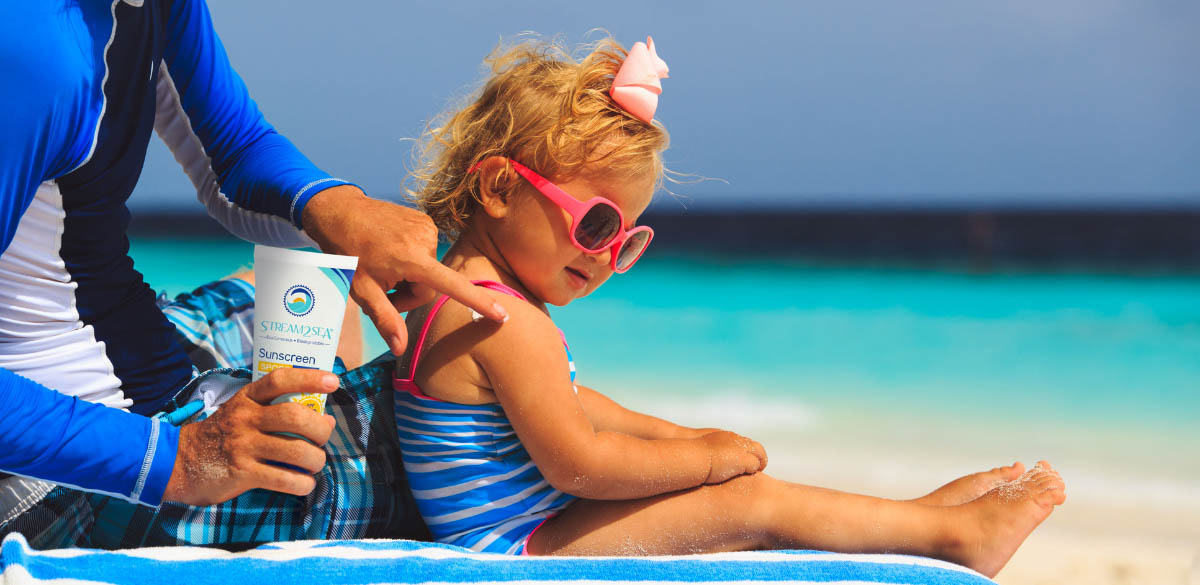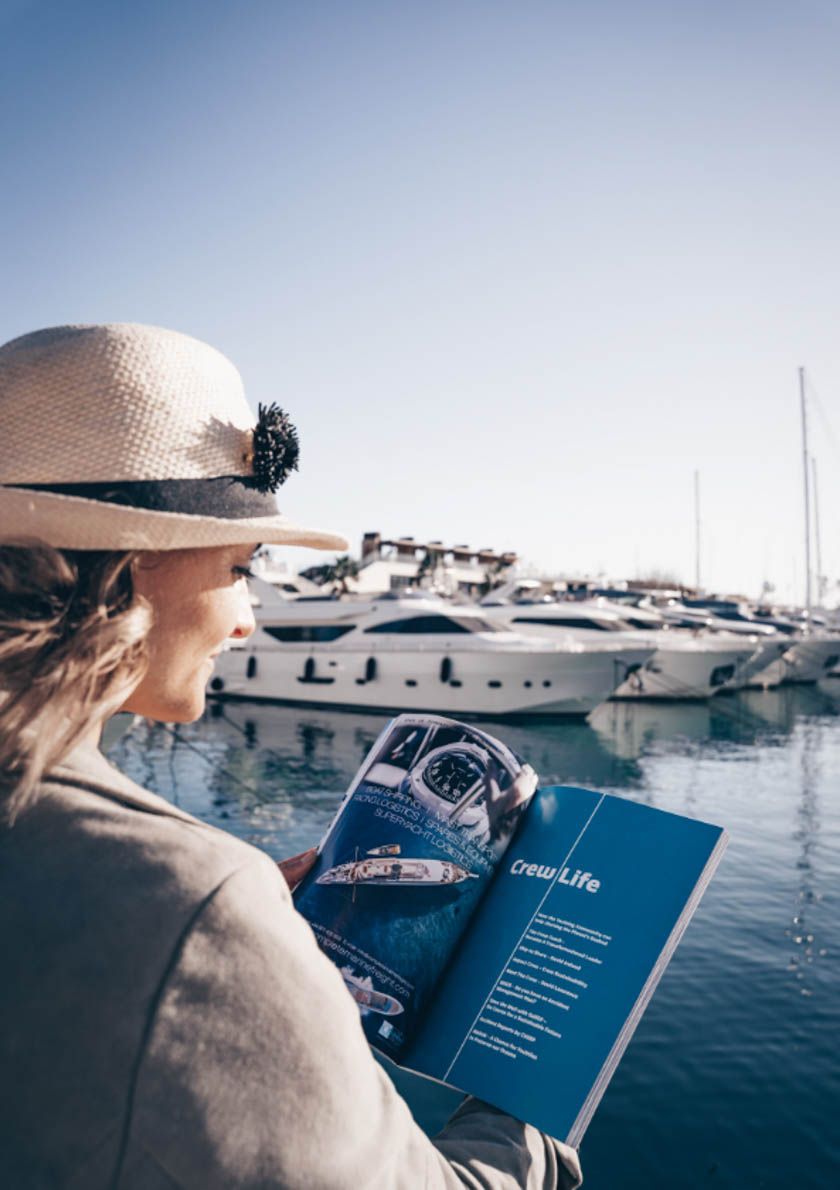As the summer season is underway and crew members spend much of their working day exposed to the elements, it’s not just vitamin D and Vitamin ‘Sea’ they will be exposed to. The sun’s potentially harmful rays are perhaps the biggest threat. Sun protection should be taken seriously and sunscreen is an essential part of a crew member’s on-board essentials.
Julie Andersen, Global Director, Brand + PR, PADI Worldwide – a passionate environmentalist, diver of 25 years and lover of the oceans gives us the lowdown.
What are the primary concerns when it comes to sunscreen & the oceans/reefs?
Sunscreen is an essential item for those at work or play in the sun, but not all sunscreens are created equal. Some, even those labelled as reef safe, can harm marine life and kill coral.
Shockingly, over 14,000 tons of sunscreen are washed off our bodies and into the oceans each year, posing a significant threat to marine life and coral reefs. The most significant source of ocean-harming petrochemicals isn’t from beach-goers and scuba divers, but the wastewater created when we wash off these chemicals in the shower or flush them down the drain. Most wastewater treatment plants cannot remove these synthetic ingredients, leading them to flow into the nearest body of water, ultimately reaching the ocean.
The side-effects of sunscreen in the ocean are alarming.
Sea anemones, which are closely related to corals, and mushroom coral, can turn oxybenzone — a chemical that protects people against ultraviolet light, into a deadly toxin that’s activated by light.
Recent studies found that chemicals in sunscreens are accumulating in Mediterranean sea-grasses. Scientists studying seagrass meadows off the coast of Mallorca, Spain, discovered ultraviolet. Since the Mediterranean Sea is shallow, small and very enclosed, concentrations of UV-absorbing chemicals can reach high levels. This discovery could have broader implications for an ocean ecosystem that provides critical habitat and foraging grounds for marine life, strengthens coastal areas against erosion and storm damage, and sequesters carbon.
UV-filtering sunscreen chemicals have been shown to harm fish, turtles, and dolphins, with exposure to these contaminants posing serious risks to their survival.
These same chemicals also damage coral reefs – most specifically – in tourist destinations like Hawaii, Key West and Palau.
It is crucial to recognise that what is harmful to the oceans is often harmful to humans as well. Oxybenzone is proven to inhibit coral reproduction but also reduces testosterone levels in men disrupting their reproductive systems and development. Initial studies show the chemical lingers in the body and has been found in amniotic fluid, urine and blood and the breast milk of both human and dolphin mothers.
Physical sunscreens use minerals like zinc oxide to reflect harmful UV rays, while chemical sunscreens absorb UV rays using ingredients like avobenzone, benzophenone/oxybenzone, ecamsule, and octocrylene.
To protect both our skin and the reefs, it is recommended to use sunscreens with physical UVA and UVB filters, such as zinc oxide and titanium dioxide, which form a physical block on the skin instead of being absorbed.
What sunscreen ingredients are harmful to reefs, and how so? Are some more harmful than others?
There are two types of sunscreen, physical and chemical. Physical sunscreens use minerals, such as zinc oxide, to reflect harmful UV rays while chemical sunscreens absorb UV rays and typically contain ingredients such as avobenzone, benzophenone/oxybenzone, ecamsule and/or octocrylene.
These chemicals are not only bad for coral, they may be bad for humans too. A recent FDA study found chemical sunscreen ingredients can enter the bloodstream and remain in the body for 24 hours or more after application.
Studies have shown even tiny concentrations of chemicals such as oxybenzone and octinoxate from sunscreens can cause corals to be more susceptible to bleaching and also damage their DNA in the lab.
To protect both our skin and the reefs, PADI recommends applying an SPF with physical UVA and UVB filters before going beneath the surface. Look for active ingredients like zinc oxide and titanium dioxide, which form a physical block to shield skin from absorbing any rays – whereas chemical filters absorb UV and turn it into heat that’s released from skin.
What is the difference between “reef-friendly” and “reef-safe”?
Unfortunately, the term ‘reef friendly’ is not regulated, so you can’t always trust products with this description. It’s important to check the “active ingredients” label on the back of your sunscreen to ensure it does not include reef-harming chemicals. The size of minerals can also have an impact. Opt for micro-sized (or non-nano) mineral sunscreens to avoid toxic nanoparticles. Lotions are preferable to spray or misting sunscreens, especially those that contain titanium dioxide, as inhalation can be harmful to health. Additionally, choose products that reduce single-use plastic packaging, such as reusable containers, those with high recycled content, or made from biodegradable plant-based materials like cardboard.
PADI loves Stream2Sea, an eco-conscious skin care line that is healthy for us and our planet. Stream2Sea’s products have undergone extensive testing to ensure their safety for freshwater fish, saltwater fish, C. elegans, and coral larvae.
If you want to look cool when it’s hot, and to protect yourself while having fun in the sun diving, snorkelling, swimming or surfing, PADI GEAR recycled plastic rash guards provide another solution. Made from a regenerated nylon that comes from ocean waste like fishing nets, PADI’s super cool rashies deliver a UPF of 50+ – keeping you protected for up to 8 hours against solar ultraviolet radiation.





























0 Comments